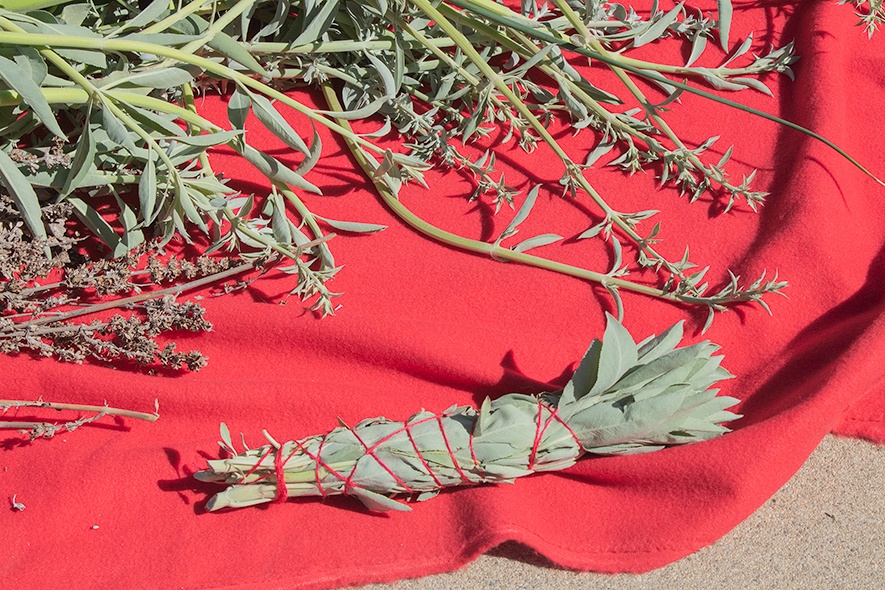Sage Gathering Ceremony Honors Traditional Native Heritage

Photo courtesy of Drake Ingram, Campus Times
Members of the university community gathered around the bushes of native California white sage plants growing abundantly in the sustainable native plant garden outside the Ludwick Center. The sun radiated brightly over Hoover Hall, casting a blanket of spring warmth over the group as Tribal Elder Trevor Thomsen, keeper of the Karuk peoples’ traditions and customs, gathered guests in for a welcoming prayer. The sage gathering ceremony was about to begin.
The air was purified with the scent of burning sage that had been carefully dried and prepared ceremoniously prior to the event. A hush fell over the crowd as Thomsen sung to the beat of a ceremonial clapper stick and rattle. Guests joined their voices together to welcome the ancestors. A red-tailed hawk circled the group, reaffirming the ancestors’ presence in the circle. Guests kept their attention fixed on Thomsen’s every word as they honored the cardinal directions, the earth and heavens, and the plant and animal life that surrounded them, grounding each person in the circle for the rest of the experience.
The sacred trimming of sage plants is a Native American tradition honored at the University of La Verne. Around two times a year, between the spring and fall months, Thomsen leads students, faculty, staff, and interested community members through a sage gathering and blessing experience where guests may leave with their own bundle of sage and a renewed understanding of the medicinal plant.
Before the trimming commenced, Thomsen shared stories of the animals and the significance of the spring equinox. The full worm moon this year symbolizes the return of spring and the worms and small creatures that help feed the birds. Bears also wake up from hibernation, lumbering down the mountain in search of food. The joy in Thomsen’s voice was engaging as he connected spiritually with everyone around the circle.
He then shared how sage is used for blessing, healing, and cleansing rituals and how it has been cultivated by tribes for generations. He was joined by two other tribal members at the event who spoke about the challenges of indigenous plant overcultivation and profiteering. Thomsen’s tribal brother, known as “Bear”, shared the importance of educating others about their culture and traditions.
After the prayers and stories ended and the burning of a pre-dried sage bundle turned to embers, Thomson taught the group how to ask the plants for permission to trim them, exemplified like how one would need permission from someone to cut their hair. Ceremonial dried tobacco leaves were also blessed by guests and thrown over the plants to show appreciation and pray for new growth. The group then took clippers and found which plants were accepting of a trim by “listening with the universal language of the heart.”
Once guests gathered their sage leaves, they learned how to properly wrap the sage into red yarn bundles. The bundles would then need to be dried for future burning practices, otherwise known as “smudging”, where the plant is smoldered around people, places, and things that one looks to cleanse of negative energy and bless for abundance and prosperity.
The event closed with a prayer to thank the plants and help guide the ancestors back to the heavenly plains. Thomsen thanked Chaplain Zandra Wagoner for continuing this tradition on the campus for over five years. As the group dispersed, each member took their small bundle of sage, a reminder of the power of nature and the need to be mindful of its gifts.
The sage gathering ceremony is hosted by the Office of Religious and Spiritual Life and will continue to celebrate this tradition in the future as part of the university’s commitment to promoting diversity, equity, and inclusion on campus.


